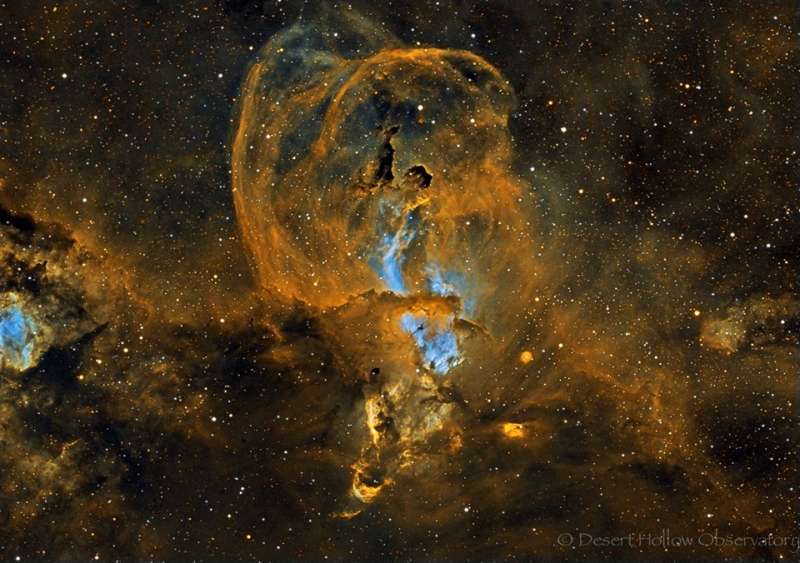Credit & Copyright: Desert Hollow Observatory
Explanation:
What's happening in the NGC 3582 nebula?
Bright stars and interesting molecules are forming.
The
complex
nebula resides in the star forming region called RCW 57.
Visible in this
image are dense knots of dark interstellar dust,
bright stars that have formed in the past few million years, fields of glowing
hydrogen gas
ionized by these stars, and
great loops of gas expelled by dying stars.
A detailed study of NGC 3582, also known as
NGC 3584 and
NGC 3576,
uncovered at least 33 massive stars in the end stages of formation,
and the clear presence of the complex carbon molecules known as
polycyclic aromatic hydrocarbons (PAHs).
PAHs are thought to be created in the cooling gas of
star forming regions,
and their development in the
Sun's formation nebula five billion years
ago may have been an important step in the
development
of life on Earth.
The
above image was taken at the Desert Hollow Observatory north of
Phoenix,
Arizona,
USA.
Follow APOD on:
Facebook
(Daily)
(Sky)
(Spanish)
or Google Plus
(Daily)
(River)
1999 2000 2001 2002 2003 2004 2005 2006 2007 2008 2009 2010 2011 2012 2013 2014 2015 2016 2017 2018 2019 2020 2021 2022 2023 2024 2025 |
Yanvar' Fevral' Mart Aprel' Mai Iyun' Iyul' Avgust Sentyabr' Oktyabr' Noyabr' Dekabr' |
NASA Web Site Statements, Warnings, and Disclaimers
NASA Official: Jay Norris. Specific rights apply.
A service of: LHEA at NASA / GSFC
& Michigan Tech. U.
|
Publikacii s klyuchevymi slovami:
nebula - star formation - tumannost' - zvezdoobrazovanie
Publikacii so slovami: nebula - star formation - tumannost' - zvezdoobrazovanie | |
Sm. takzhe:
Vse publikacii na tu zhe temu >> | |
